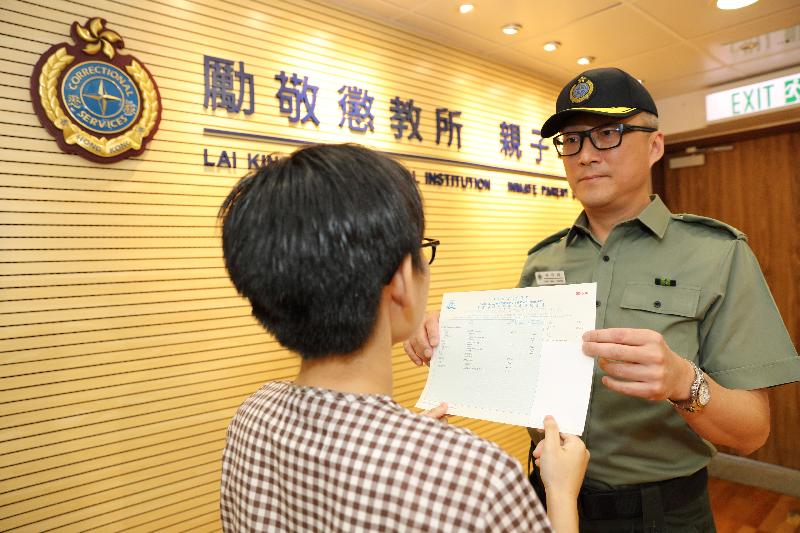LCQ7: Measures for immigration clearance
Following is a question by the Hon Au Nok-hin and a written reply by the Secretary for Security, Mr John Lee, in the Legislative Council today (July 11):
Question:
Reuters reported on June 6 this year that the Chinese enterprise Tencent had been discussing with the Mainland authorities issues relating to the establishment of an electronic customs clearance system. The system uses biometric data to create an "e-Card" system and uses WeChat and virtual documents stored in mobile phones to replace traditional travel documents (including Hong Kong Identity Cards and Home Visit Permits) for Mainland and Hong Kong residents commuting between the two places to go through customs clearance procedure. It was reported that the Chief Executive had watched a demonstration of the "Scan-WeChat-to-cross-border". It is learnt that quite a number of Mainland academics have said that streamlined customs clearance arrangements may bring convenience to the cross-boundary activities of residents in the various cities of the Guangdong-Hong Kong-Macao Bay Area (the Bay Area), and given the significant problems arising from the differences in the customs clearance systems, "separate location of boundary control for different places" is not a desirable option. In this connection, will the Government inform this Council:
(1) whether any government department discussed with Tencent or the Mainland authorities the aforesaid electronic customs clearance system in the past five years; if so, of the name(s) of such government department(s) and the progress of the relevant work;
(2) as the Finance Committee of this Council approved in May this year the allocation of funding for the Government to set up an electronic identity (eID) system which allows members of the public to access public and commercial e-services with a single digital identity and authentication, whether the Government has plans to incorporate electronic customs clearance function into the eID system so that Hong Kong residents may use their smart phones to go through customs clearance procedure;
(3) whether it has assessed if, upon the implementation of the aforesaid electronic clearance system, the storage of biometric data (e.g. the captured data on fingerprints, iris and facial information) of Hong Kong residents in the computer systems of the Mainland immigration departments will give rise to the risk of privacy leakage, and the facial recognition system of the Mainland will access such data for the purpose of monitoring the whereabouts of Hong Kong residents on the Mainland;
(4) as the Government has indicated that it will strengthen the "mutual access" to the financial services of Hong Kong and the cities in the Bay Area, whether the relevant arrangements cover customs clearance and taxation matters; if so, whether the Government has assessed if those arrangements may give rise to issues relating to "the identity of Hong Kong residents" and "integration of Shenzhen and Hong Kong", and whether the Government will conduct public consultation on those arrangements; and
(5) whether it has made reference to the technologies and relevant experience of the governments of other places in using virtual documents in mobile phones for customs clearance; if so, of the details?
Reply:
President,
The Hong Kong Special Administrative Region (HKSAR) Government has not communicated or discussed with any organisation or Mainland government department regarding the proposal of performing immigration clearance with smartphone applications as mentioned in the question. We noted that the State Immigration Administration of the Mainland made an announcement on June 12, 2018 regarding the report that the company mentioned in the question and the relevant Mainland government departments had studied the use of smartphone applications to replace traditional travel documents (including Hong Kong Identity Cards, Home Visit Permits and Exit-Entry Permit for Travelling to and from Hong Kong and Macao) for immigration clearance. The announcement clarified that the contents of the report concerned are untrue. The Mainland authorities have not communicated or co-operated with the company on the matter. Mainland residents are required to apply for and hold a lawful and valid Exit-Entry Permit and endorsement for travelling to and from Hong Kong.
Having consulted the Innovation and Technology Bureau (ITB), the Office of the Government Chief Information Officer (OGCIO), the Constitutional and Mainland Affairs Bureau (CMAB) and the Financial Services and the Treasury Bureau (FSTB), our reply is as follows:
(1), (3) and (5) The Immigration Department (ImmD) has all along adopted various measures and made good use of technology to improve the clearance procedures and enhance the handling capacity as well as operational efficiency of control points. In recent years, measures taken by ImmD include:
- In March and December 2013, ImmD has introduced "Non-stamping immigration clearance service" for visitors and Hong Kong non-permanent residents respectively. Under the arrangement, stamping on travel documents during arrival clearance was replaced by the issue of a landing slip bearing the conditions and limit of stay of the holder. Upon departure, no landing slip or stamping would be given, which shortens the immigration clearance time.
- In December 2013, ImmD launched the "Hong Kong Immigration Mobile Application" for Hong Kong residents and visitors to obtain information on the estimated passenger waiting time at major land boundary control points and other information. The information serves as a reference for Hong Kong residents and visitors so that they may choose a less congested land boundary control point or travel at less busy hours.
- Starting from early 2016, ImmD has commenced the implementation of the "New Immigration Control System" by phases. It comprises upgrading and integration of the hardware and software of various control point systems, upgrading all existing e-Channels at control points to multi-purpose e-Channels and the installation of 158 additional multi-purpose e-Channels, bringing the total number of multi-purpose e-Channels at all control points to 595. It enables frontline staff at control points to deploy e-Channels more flexibly based on passenger flow to expedite immigration clearance of Hong Kong residents and visitors and alleviates the work pressure of the traditional counter officers.
- In October 2017, ImmD has also launched self-service departure for visitors (Smart Departure). Visitors who hold valid electronic travel documents compliant with stipulated requirements may perform self-service departure clearance, through face recognition technology for identity verification, without prior enrolment. It provides a more convenient immigration service for visitors, while enhancing the effectiveness of immigration control.
When considering and launching any measures involving changes of existing clearance mode and enhancing handling capacity of control points, the Government must take into account issues concerning the law, technology, actual benefits, etc., as well as factors such as whether the privacy of residents and passengers (including the biometric data) can be protected under the measures concerned. At present, the HKSAR Government has no plan to conduct any research on the performance of immigration clearance through smartphone applications as mentioned in the question.
(2) According to OGCIO, eID could functionally be regarded as a common key for digital identity authentication. It will enable members of the public to access various government and commercial e-services in a simple, convenient and secure manner. It can be used for logging on online accounts of the Government and public/private organisations. eID will mainly be deployed for identity authentication in online transactions. At this stage, there is no study on using eID as an identity authentication technology for immigration clearance.
(4) One of the HKSAR Government’s key focuses in taking forward the development of the Guangdong-Hong Kong-Macao Bay Area is, through policy innovation and breakthrough, to enhance the interconnectivity of Bay Area cities and foster the flow of people, goods, capital and information between Hong Kong and other cities in the Bay Area. In light of the opportunities arising from the Bay Area development, the HKSAR Government will strive for the provision of more measures that would increase the level of convenience for Hong Kong people working, starting businesses and doing business in the Bay Area, including discussion with relevant Mainland authorities on tax arrangements for Hong Kong people working in the Mainland. On promoting mutual access of financial services between the two places, we will seek to expand the cross-border use and business scope of RMB in the region, and develop additional financing channels and cross-boundary financial services to tie in with the growth of enterprises in the Bay Area.

